Carrowmore and Beltra
It is that time of the year again, the salmon season is opening here in the west. I want to just go over a few points which may help visitors to catch the elusive fish on a couple of the western lakes. I know I have touched on this subject before on this blog but every season I see anglers wasting time and effort by not fishing in the right places or using the wrong tackle. Old hands know all of this but for anglers new to Carrowmore or Beltra this advise may save you many hours fishing in the wrong place or using the wrong methods.

Let’s start with Carrowmore.
The whole lake is shallow and as such can hold salmon just about anywhere. The angling tends to take place over well tried lies like the mouth of the rivers, Paradise bay and Bog bay but I have seen fish caught in all sorts of other places too. A word of warning, there are a lot of shallows which are not marked and in low water conditions it is all too easy to clip a rock while travelling. Salmon like to lie in shallow water, anything more than 8 feet is probably too deep for angling for them but very little of Carrowmore is greater than that. So the message is keep fishing, you are unlikely to be over water which is too deep so even if you are far out from the shore you still could meet a salmon. On the other hand you need to watch out for drifting too close to the shore, less than a couple of feet of water is unlikely to be productive.
There is no need for heavy two-handed rods on Carrowmore, a single handed rod capable of casting a 6 – 9 weight line is fine. I use an 11 footer which chucks a size 7 or 8 line and have never felt over or under gunned.
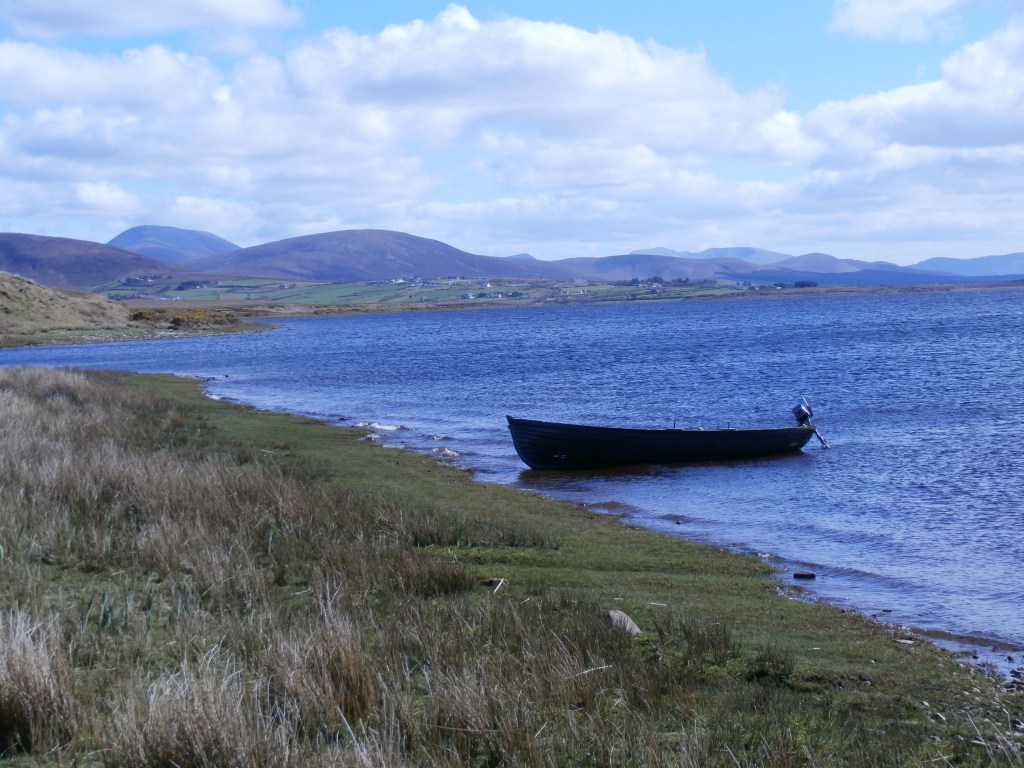
Line selection is purely personal with fish being caught on floaters, sinkers and everything in between. In water so shallow I think an intermediate is a safe choice and I use that most of the time. Don’t over think line density, I doubt if it is a crucial factor on this lake. Other than fast sinking lines which will just snag your flies on the bottom you should use what you are comfortable with.
Fly size is important though. Small flies work best on Carrowmore and most anglers prefer them tied on size 8 or 10 heavy trout wet fly hooks. With flies of this size you don’t want to use heavy leaders which will kill the action of the fly in the water. Ten or twelve pound breaking strain mono or equivalent fluorocarbon will be good. If this sounds too light bear in mind that the vast majority of salmon will be in the 5 to 12 pound range and even if you hook a much bigger fish there is a lot of open water to play him in so you don’t require heavy leaders to bully fish. The only exception to this is Bog bay which has innumerable snags on the bottom in the shape of drowned trees stumps. If you hook a salmon in Bog bay get it to the top of the water and try to hold it there, a long run by the fish on or near the bottom will almost certainly snag you.
How far should you cast? A good question and one that does not have one answer. Some days the fish want a fly dibbled on the top so short, 5-10 yard casts are all this is required. Other times will see the fish respond to a pulled fly so longer casts score better. My best advise is to vary your casts and retrieves until you get a response.
Be prepared to use the oar to guide the boat’s drift. Some days you hardly need to use the oar but on others when the wind is not quite in the right direction you will be using it constantly. A ghillie will of course look after this if you hire one but otherwise it pays to take turns on the oar. it is quite tiring if you are not used to it and the combination of casting and controlling the boat takes a bit of getting used to.
This is a very forgiving lough. Salmon are caught every season it next to impossible conditions like flat calm and in heavy rain. Perhaps the best advise I can give you is to fish hard. I don’t mean frantic casting in all directions. Just keep fishing and concentrating even when the sun is shining down on a near mirror like surface or a cold easterly is cutting you to the bone.
A day on Carrowmore can be tiring, even if you are not on the oar but it definitely pays to fish on into the evening. All too often I have seen anglers pack up and head to the pub only for the fish to come on before it gets dark. The wind usually drops with the coming of the evening which can ruin the fishing if it goes flat calm but as long as there is a ripple there is hope.
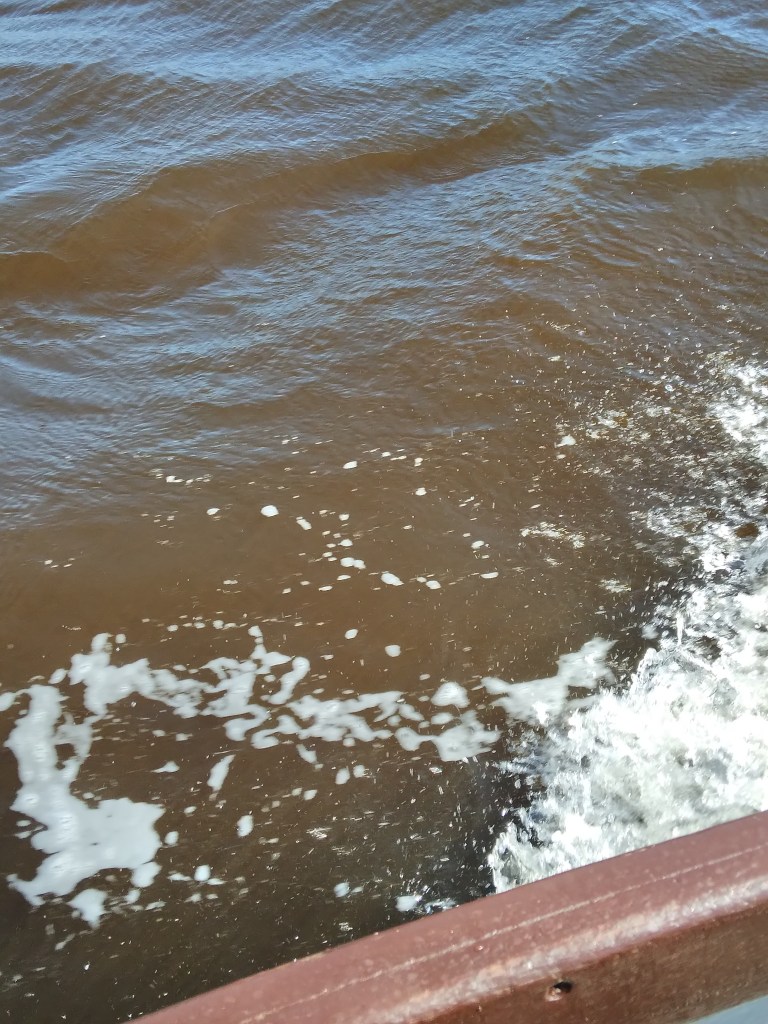
I have talked about the lake ‘churning’ many times so I won’t labour the point here, suffice to say do not be tempted to go out when the water is brown. While it may not be impossible to catch a fish in these conditions your chances are heavily reduced.
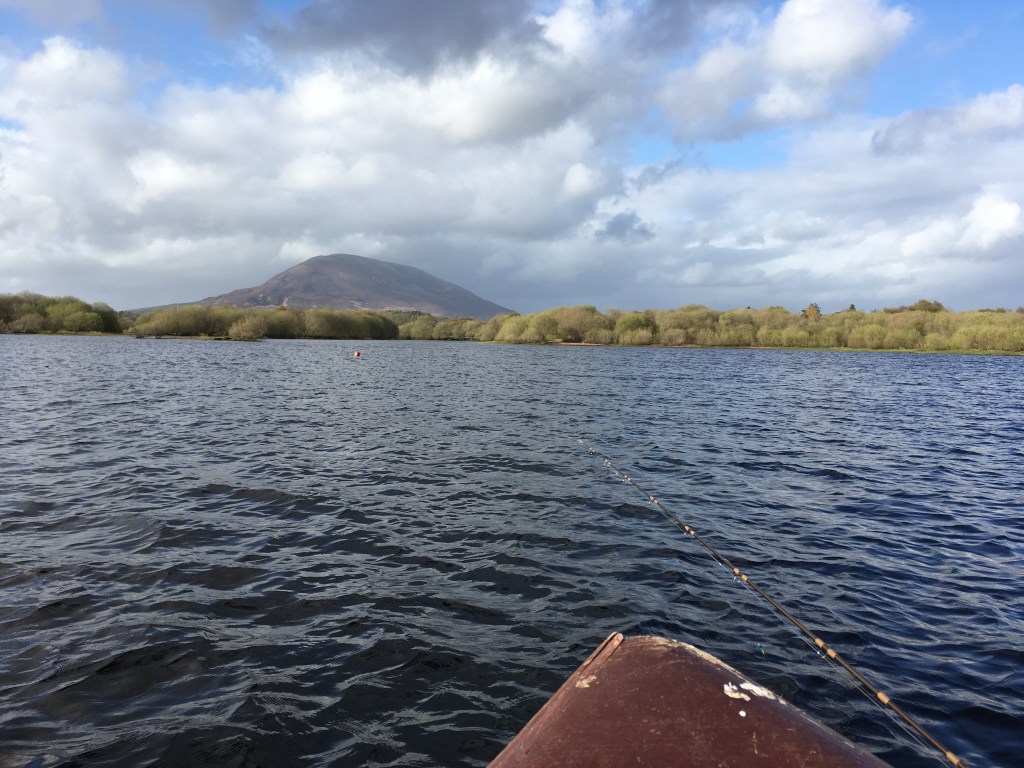
Now let’s consider lough Beltra.
Geographically these two loughs are not terribly far apart but in terms of fly fishing they are totally different. Beltra is a deep lake with some shallows at either end and a very narrow strip of fishable water along the edges. By far the biggest error I see is anglers fishing too far out from the shore. If you are more than 30 yards from the shore on Lough Beltra you are not going to be covering salmon. You might get the odd pluck from a small trout out there but that’s all. Personally, I want to be drifting between 5 and 25 yards from the shore. To keep your boat on that line takes some skill in boat handling, especially in the high winds which constitute the best conditions. One minute you are almost up on the rocks then before you know it you are 100 yards out over deep water. Again, a ghillie will look after the drifting boat if you hire one, otherwise it is a case of pulling on the oar and casting yourself. The trick is to follow the contours of the bank. There is an extensive shallow right at the mouth of the Glenisland river where you come out of the Coop harbour. This is a noted salmon lie and well worth concentrating on if you are unsure where else to try.
Many local fishers use 12 – 13 foot double handed rods on lough Beltra to give themselves power to lift sinking lines and a team of large flies. Trust me, a day on Beltra in a big wind fishing a team of three size 4 flies on a sinking line will ensure a good nights sleep afterwards, not to mention an aching shoulder! For me, a double-hander is a pain to use on the boat so I prefer a heavy single handed rod and frequently drop from a three fly cast to two flies. I just feel in more control with that set up.
Lines for spring fishing need to get down in my opinion. A medium sinker or fast intermediate would be my choice but some lads use fast sinkers and catch a lot of fish on them. Of course there are no absolutes in fishing so fish are caught on floaters too. The past few seasons have seen some big salmon return to the system and I habitually use heavy leaders on this lake. 15 to 20 pound mono feels about right to me. I specifically use mono as I find it is less prone to tangles on a windy day. Check your leader at the end of every drift or if you suspect a wind knot has formed. This quickly becomes a habit and might save you the pain of a snap when playing a fish.
Fly sizes for spring fishing on Beltra are larger than for Carrowmore with patterns tied on hooks ranging from size 8 all the way up to size 4 singles in common use. Again, this blog is littered with fly patterns for these and other Mayo loughs but if you fished with a Green Peter, a Bibio and a Claret Bumble in sizes 6 or 8 you would be in with a shout.
My advise on casting distance for Carrowmore holds good for Beltra too. Over the years I have seen many fish take quite close to the boat and have often got the impression they have followed the fly and grabbed it before lifting off. Big waves in a high wind are the most favourable conditions but just fish a short line when the wind blows strong, trying to cast a long line is a waste of energy and short-lining will bring the best results.
Beltra does not churn lake Carrowmore. It can become coloured when the Crumpaun river goes into spate after heavy rain. This colour does not last long once the spate has run off and the lake soon comes back into good ply. I personally prefer the lake to be high but fish can be caught at any level. Don’t expect to see many salmon jumping on Beltra, it is one of those lakes where the fish very seldom show. Just because you are not seeing any jump it does not mean there are no fish in the lake.
A day on Beltra is something to savor, a balm for the soul if you will. The scenery is breathtaking, the surrounding hills are an ever changing vista. Be sure to bring a camera or at least have your phone fully charged so you can capture a few memories. She does not give up her salmon easily though and it takes skill and perseverance to hook one even of the best of days. Carrowmore is a far more productive lake to fish but still Beltra is a very special place and even a blank day will leave indelible prints on you. Facilities on the Glenisland Coop side of the lake are right up there with the best in the country thanks to a progressive and hard working committee. Club members go out of their way to help visitors too, just adding to the enjoyment of angling on a famous water.
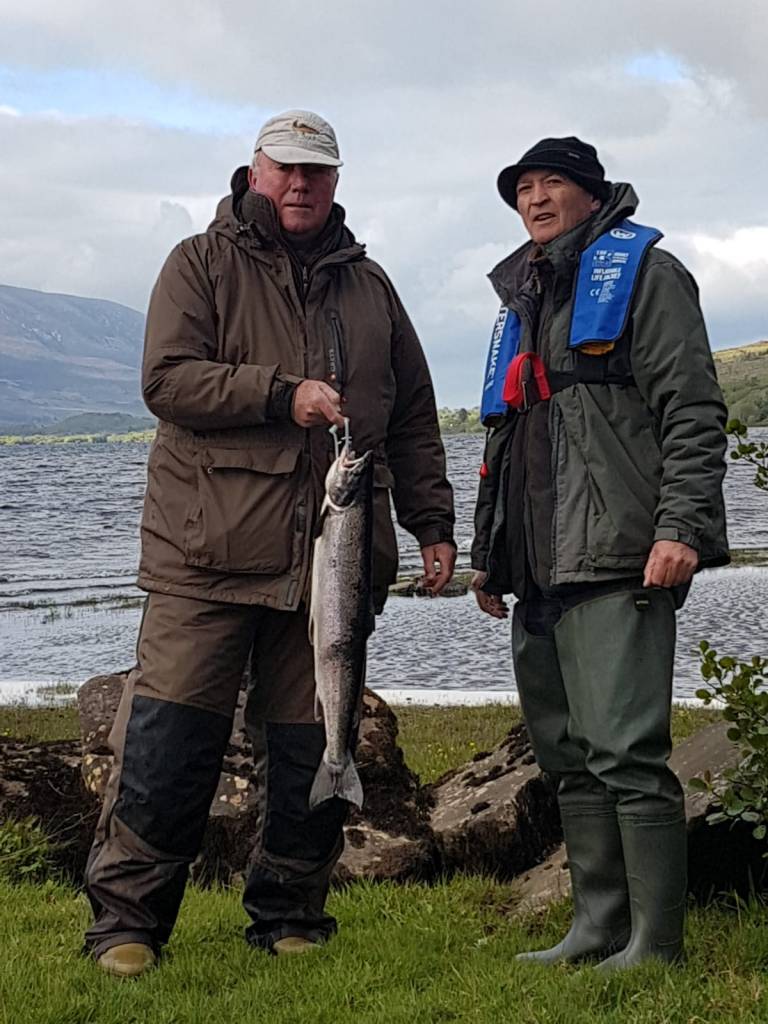
Some general comments which apply to both loughs:
Bring a good sized net with you. Each season I see boats in trouble trying to land a salmon because the anglers had forgotten to bring a net.
Always wear a flotation device. It’s in the rules but aside from that you are fishing big, wild waters and your safety is the most important thing.
Be considerate of other boats and don’t ‘cut in’ on someone’s drift. Carrowmore especially can be busy and you need to be aware of boats around you.
Always fill in your salmon licence log when you catch a fish, even if it is released. This is vital information for the IFI. If you do retain a salmon and take a photo of it try to make sure you have tagged it first.
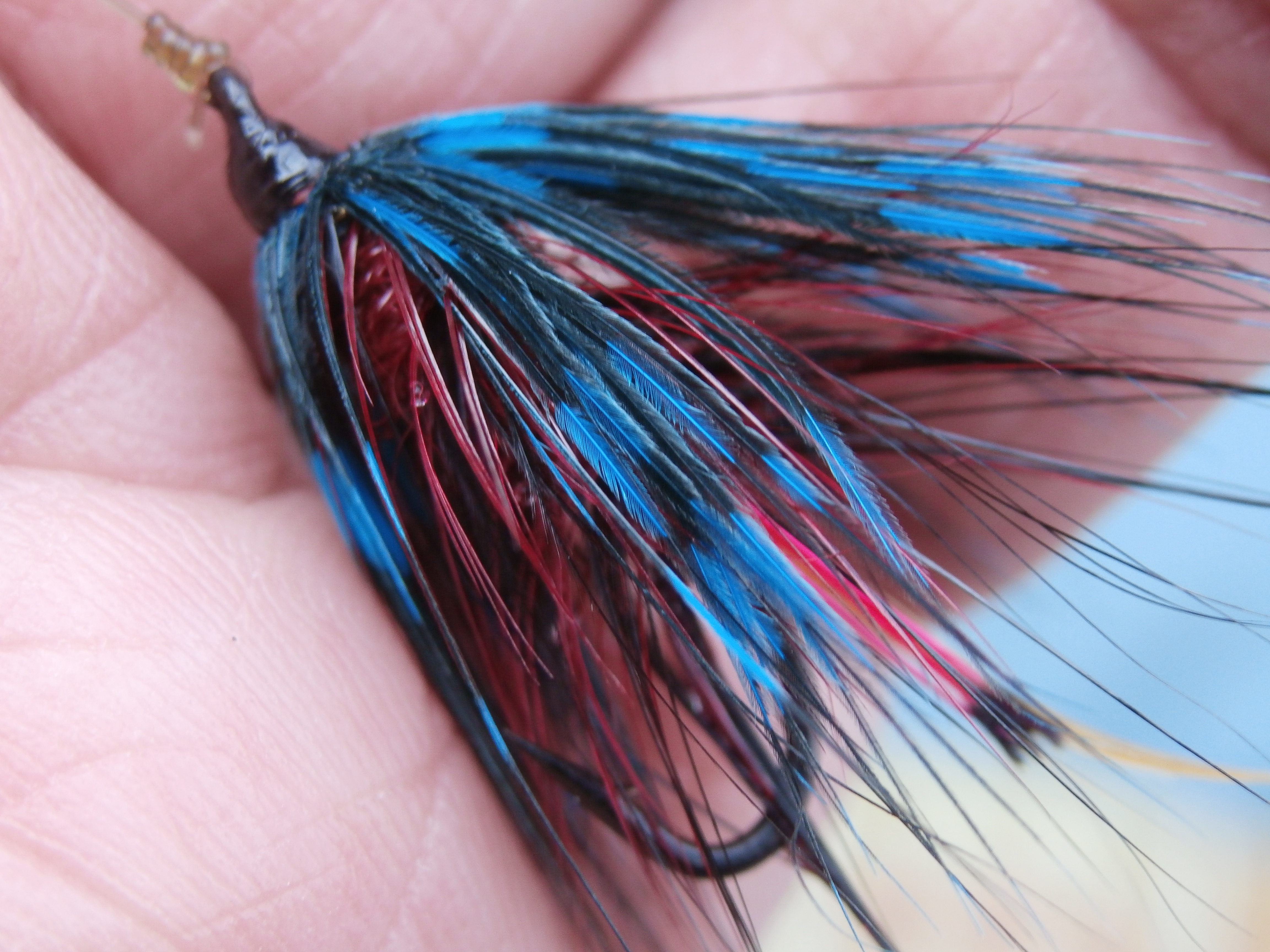


You’re a very generous angler Colin.
Clive
LikeLike
Aw shucks! Hope all are well with you Clive.
LikeLike
Invaluable information, Colin. My goal this year is to catch a salmon on Beltra. I can certainly testify to the fact that it doesn’t give up its salmon easily. I completely blanked there last year after a fair amount of fishing. In fact I believe I failed to move a single salmon there. It truly is a beautiful location though, so always worth the outing.
Drifting parallel to a long shore like that can be very tricky, especially for beginner boat-fishermen like myself. I can only imagine the chaos if I actually hooked one, especially if I was on my own! Seriously, I couldn’t see that going well. I’d be up on the shore after 30 seconds. But I’ll worry about that if and when I’m lucky enough to be in such a predicament.
LikeLike
Hi Vincent, I have always been of the opinion that Beltra is not a lough for beginners. It fishes best in difficult conditions when boat handling, casting and concentration are tested to the limit. That is also part of what makes it such a wonderful fishery. I’d say one salmon from Beltra is worth 5 from Carrowmore, it really can be that tough. My points about controlling the drift of the boat to maintain the right distance from the shore is the most critical factor and getting that right will give you the best chance. After that it is a case of perseverance with a dash of good luck thrown in.
LikeLike
Absolutely Colin. It just requires too much precision for a beginner given such a narrow taking zone, and the waves (though very necessary) just compound the difficulty! You’re no sooner adjusted back on the drift when moments later you’re way off course again.
LikeLike